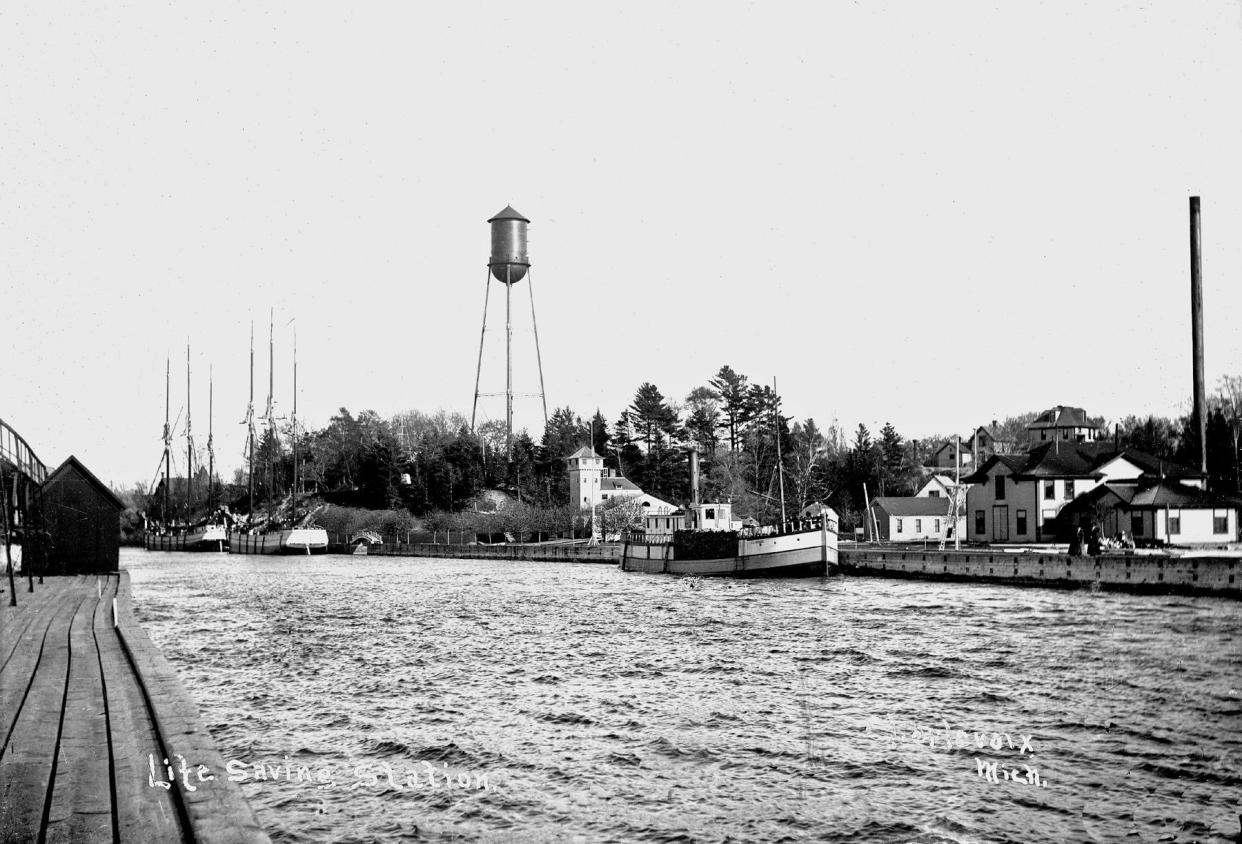Looking Back: Charlevoix's Pine River Channel is born

CHARLEVOIX — This is number four in a series related to an upcoming exhibit at the Charlevoix Historical Society’s Museum at Harsha House, opening in early July, that will focus on The Maritime History of Charlevoix.
Last week, Looking Back looked back at July-August, 1869 when the first manmade connection of Lake Charlevoix to Round Lake took place, an epic move in our history. A substantial cut, 240 feet in length, had been achieved between the lakes. Now full connection outward by water was only weeks away. The Charlevoix Harbor and River Improvement Company stopped their efforts for only a short time, caught their breath, and at the beginning of September turned their attention to the west.
This second and final effort was much less extensive than the deforestation and earth moving that had just taken place, because improvement of Lower Pine River had already been attempted by several parties acting on their own. Both upright and fallen tree removal, pickaxes flailing away, hand shoveling, horses hauling displaced rocks, then hauling scrapers to level the ground — for several years these individual, mostly futile attempts had tried to straighten, widen, and deepen the swift stream that flowed to Lake Michigan. At first, to get small boats in, a towpath had been cut the length of the south bank so that people could tow their vessels against the current and into the inner harbor. It was not an easy task.
A huge sand bar blocked the area where our current channel meets Lake Michigan. The actual exit of the stream occurred about 450 feet south of the present piers, in the area below Park Avenue where the water intake plant is today. When the stream exited Round Lake, it flowed in a gentle curve to the southwest, following the base of the bluffs still there. It was not unusual for a boat owner to stop on Lake Michigan near the present lighthouse and, often with the help of others, haul his vessel over the sand dune for closer proximity to Round Lake. This was done to avoid contention against the few hundred feet of current in the shallow lower half of the stream.
But once a straightened channel would be created, all of this would be a thing of the past. Work went swiftly. Nothing of note appeared in the Charlevoix Sentinel newspaper regarding any major impediments to progress. On Oct. 8, 1869, the local lumber company’s little schooner Mendota was towed into Round Lake, the first sizable vessel to enter our harbor waters. Now Pine River, officially named Charlevoix 10 years later, began its adventurous connection outward that would take its name around the globe.
And how much did all this cost? Having been erroneously informed by the federal government that the lower channel alone would cost $200,000, and that our request for funds and assistance had to be denied for that and other reasons, the Charlevoix Harbor and River Improvement Company gave that information a resounding raspberry and created both channels themselves — for less than $1,500 total.
In the summer of 1870, the tug Minnie Warren, which had been instrumental in cutting the upper channel as related last week, dredged enough of the lower channel so that by August the 87-ton schooner Maple Leaf would be towed in, “and was thought to be an important event in the history of navigation to this point.” (Traverse Region 1884 book)
In July of 1873 more dredging of the channel was accomplished, with the intent to make it 11 to 12 feet deep and reduce the former width that varied from 50 to 75 feet to a uniform 35 feet wide.
“All dredging prior to this time had been done with tugs, and the appearance of a ‘real live’ dredge was an occasion of great public interest, and the entire population turned out to give it a reception.” In 1876, the federal government, now realizing how important Charlevoix had swiftly become in the regional economic scheme of things, made an appropriation of $10,000 for maintenance and improvements, and Charlevoix became a “port of entry” under federal oversight. The entire span from Lake Michigan to Lake Charlevoix was now a federal waterway, which it still is.
The channel reached its present width by 1882, and at last the largest lake vessels of the time could reach Round Lake. The first to do so was the passenger vessel Fountain City, on July 7. Hundreds of Charlevoix citizens cheered the vessel as it steamed up the channel and into what many mariners, both pleasure and commercial, regard as the finest naturally protected harbor on the Great Lakes.
The accompanying photo shows the outer portion of the channel in approximately 1907. At far right, with smokestack, is Charlevoix’s second electric plant. To its left appears a loaded lumber hooker, probably waiting for the wind to die down. Beyond that is the tower of the Coast Guard station, completed 1901, and a major landmark for over 60 years. Above it looms the Park Avenue water tower, completed in 1906. To its left are two huge three-masted schooners, moored here to await the availability of dockage space in Round Lake. Tugs will tow them into the harbor. At far left is the 8 x 10 wood-frame oil and supplies storage shed, built in 1890 to service the lighthouse, then on the north pier.
This article originally appeared on The Petoskey News-Review: Looking Back: Charlevoix's Pine River Channel is born

